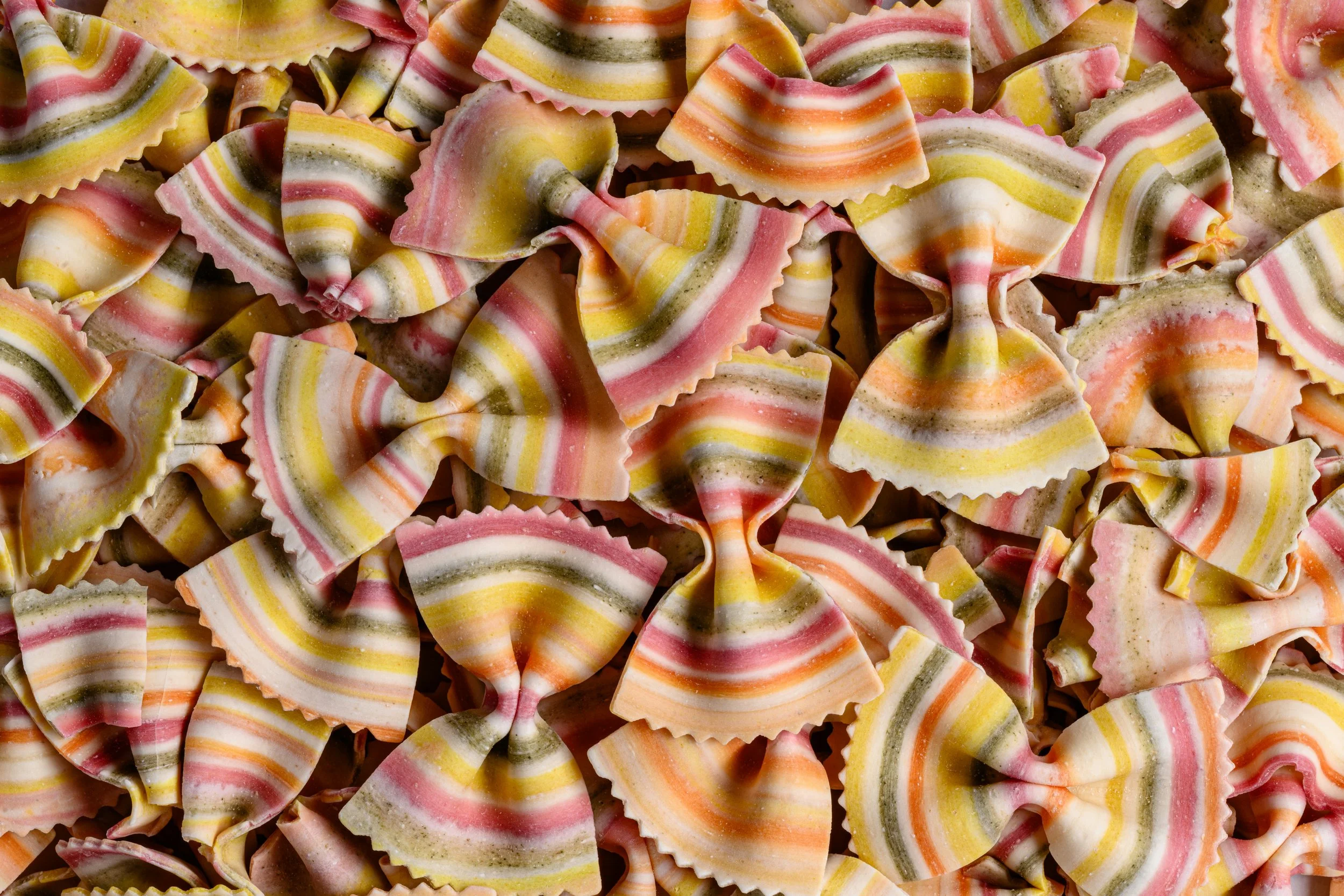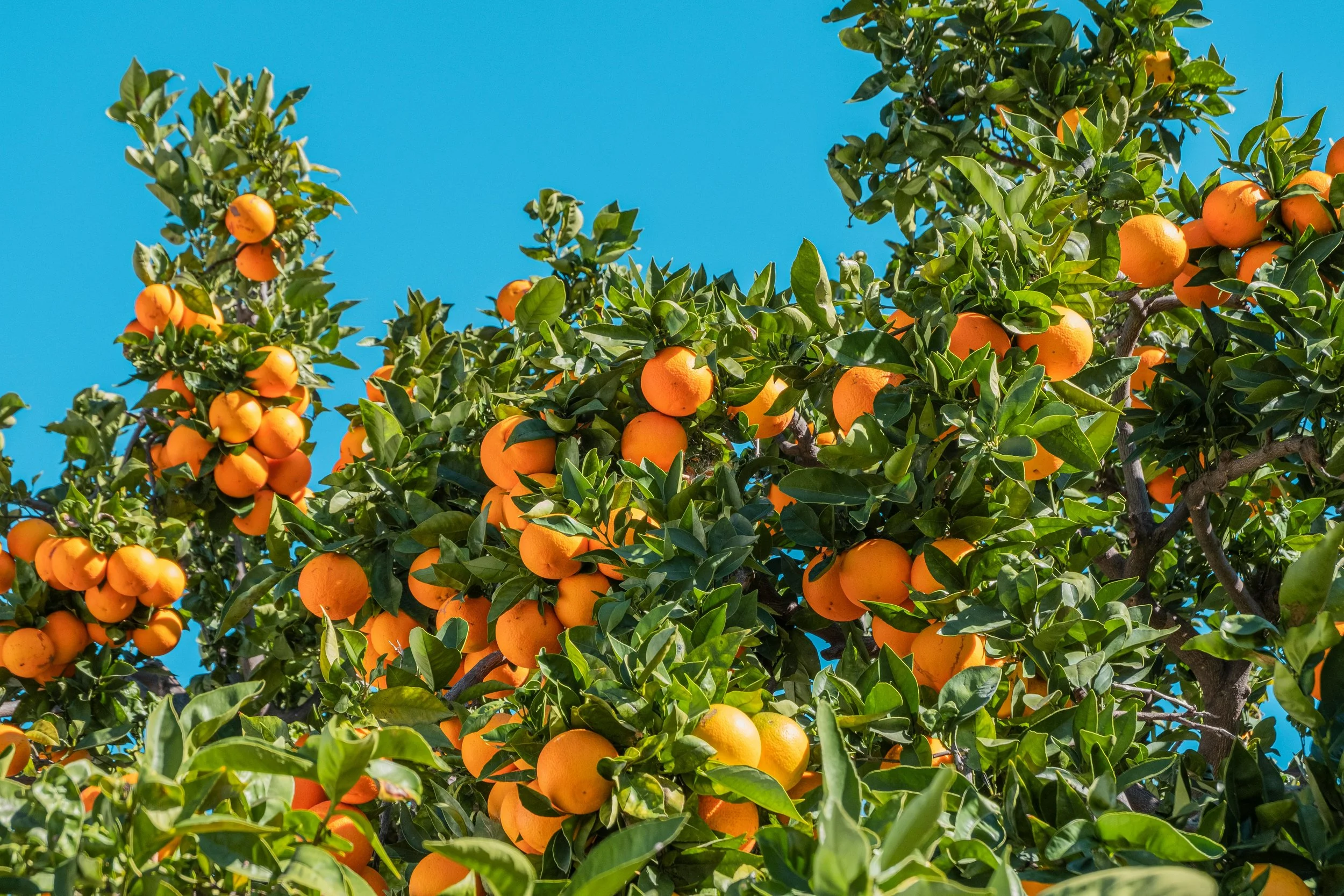The Dye Drama You Didn’t See Coming—7 Sneaky Foods That Might Be Affected
“Let It Be Natural.”
BY STEPHNIE @the Brimly Test KitchenMay 1, 2025

Image Source/Katelyn Perry
20 minute ReadINFO CONTENTFEATURE ARTICLEObjective VIEW“While synthetic food dyes are considered safe by regulatory agencies and offer consistency and cost advantages over natural alternatives, they have no nutritional value and are often used in heavily processed foods targeted at children.”—Dr. Jessica Knurick, Registered Dietitian
In late 2023, California passed a first-in-the-nation law banning Red Dye No. 3 and three other additives from candy, baked goods, and other foods. The move – dubbed the “Skittles ban” in headlines – put a spotlight on synthetic food dyes hiding in everyday snacks. Now federal regulators are also stepping in. In April 2025, the U.S. FDA announced plans to phase out all petroleum-based food dyes and push food makers to use natural colors instead. It’s a dramatic turn in food policy aimed at chemicals long used to make our foods look more enticing. So what’s behind these bans, and which foods might actually lose their artificial colors?
“Today, the FDA is asking food companies to substitute petrochemical dyes with natural ingredients for American children as they already do in Europe and Canada,” FDA Commissioner Dr. Marty Makary said in a recent announcement. Health advocates have hailed measures to curtail synthetic dyes as overdue – Consumer Reports called California’s new law “groundbreaking” – pointing out that the European Union already restricts or labels many of these additives. On the other side, some food industry experts argue these particular dyes aren’t essential and can be replaced without ruining products. The stage is set for a big shift in what colors our foods, with companies given deadlines (California’s ban kicks in 2027) to adjust their recipes. But as regulators crack down, consumers are left wondering.
view:LISTEN“Bright, beautiful… and possibly on the chopping block. California’s new dye law signals big changes ahead for artificially colored foods.”— Image courtesy of Joanna Stołowicz
Should You Be Worried?
For the average shopper, the key question is whether these rainbow-bright dyes pose any real risk. Regulators insist the bans are about caution: children, in particular, may be more vulnerable to certain artificial colorings. A California scientific panel in 2021 linked high consumption of synthetic dyes to hyperactivity and learning issues in some kids. That finding helped spur new state laws. On the federal level, the FDA itself had already banned Red No. 3 in cosmetics decades ago for causing cancer in lab animals, and as of January 2025 it moved to finally ban Red No. 3 in foods as well. Overall, though, the FDA maintains that the other approved dyes are safe in small amounts, and it hasn’t formally found conclusive proof of harm in humans for most food colorings. Some experts say the health risks from dyes are minimal in small amounts, but many agree that transparency and cleaner labels are worth aiming for. In other words, the recent crackdown is about nudging companies to make safer swaps – not about sounding alarm bells for shoppers.
Still, the “dye drama” may change the look of some familiar foods. Here are seven everyday items that could be affected by new dye policies – and why they had artificial colors in the first place.
““Today, the FDA is asking food companies to substitute petrochemical dyes with natural ingredients for American children as they already do in Europe and Canada.””
Oranges
It’s hard to imagine a more natural food than a fresh orange, yet some oranges in U.S. supermarkets get a cosmetic assist. In Florida, orange growers have been known to dye the peels of their oranges with Citrus Red No. 2 to give them a more uniform sunny color. Why dye a fruit’s skin? According to the FDA, it’s partly due to climate: in certain warm growing regions, oranges can ripen internally while the peel stays greenish. To meet consumer expectations for a vibrant orange exterior, packers sometimes apply a tiny amount of Citrus Red No. 2 to the rind. The practice has been permitted by the FDA since 1956 (for oranges intended to be eaten fresh, not for juice processing). The dye is not supposed to seep into the flesh, and treated oranges must be labeled as “artificially colored” – though in reality that notice often only appears on the shipping crate, not on the individual fruit. Importantly, Citrus Red No. 2 carries some controversy: it’s classified as a possible carcinogen, and its use is banned on citrus in many places, including California and Arizona. Now it may be on its way out nationwide; FDA officials have singled out Citrus Red No. 2 as one of the first dyes they plan to revoke approval for in the coming months. So don’t be surprised if in the near future some Florida oranges sport a little green tint – that might actually be their natural look, without dye.
Sausages
The secret to those plump, reddish-orange hot dogs at the ballpark might be an artificial color. Orange B – an FDA-approved dye rarely seen outside this context – is used specifically to color the casings of some frankfurters and sausages. It’s essentially a food-grade dye that gives processed sausage that appetizing uniform tint. Only a narrow range of products ever used Orange B, and even then it’s typically applied on the outer casing (which in many sausages is edible). If you’ve never heard of Orange B, that’s because it’s one of the more obscure additives; in fact, regulators have considered it “provisionally listed” for decades, and it’s not widely used. Like Citrus Red 2 for oranges, Orange B is now in regulators’ crosshairs. The FDA has announced it will move to revoke approval of Orange B for food use, effectively banning it. Manufacturers have until 2026 to find alternatives for any products still dyed this way. The good news is that this change shouldn’t affect the taste or safety of your favorite hot dogs – they might just look a bit more muted in color. And plenty of brands already rely on natural casings or no coloring at all. So if your summer sausage cookout looks a tad less bright in the bun, it’s likely due to the absence of Orange B, not any change in the meat itself.
“Not Always Au Naturel. Some Florida oranges get their glow from Citrus Red No. 2—a dye now facing a federal phase-out.”— Image courtesy of Philippe Gauthier
Canned Vegetables
When you pop open a can of peas or green beans, you expect a pleasing green color – and believe it or not, some companies have achieved that look with the help of artificial dyes. Blue No. 1, for instance, has been used in canned peas to enhance their green appearance. (Combining a bit of blue dye with the natural yellow-green of vegetables yields a more vibrant green.) It sounds odd, but canned veggies often lose color during the high-heat canning process, so processors historically added dyes to keep them looking “fresh.” In fact, one analysis found that some wasabi peas snacks (dried peas coated in seasoning) used a combo of Blue 1 and Yellow 5 – and even a dash of Red 40 – to create that rich green hue. The practice isn’t universal: many canned vegetables get their color from nature or use natural color enhancers like turmeric. But if you’ve ever wondered why certain bargain-brand peas seem almost hyper-green, synthetic coloring could be the reason. With new scrutiny on dyes, companies may opt to skip the artificial tints. Your canned peas of the future might look a bit duller – but they’ll still taste the same and pack the same nutrients. It’s a small trade-off in appearance for a cleaner label.
Butter and Cheese
Bright yellow butter and orange cheddar cheese have a secret history of dye. Traditionally, dairy producers colored their products to meet consumer expectations: butter from grass-fed cows in summer is naturally golden (thanks to beta-carotene in grass), but in winter, butter can turn pale – so farmers began adding coloring over a century ago. Many cheeses, like cheddar or American cheese, also get a color boost. Often this is done with natural dyes like annatto (from achiote seeds) or beta-carotene. But synthetic dyes have played a role too. In fact, an artificial colorant nicknamed “Butter Yellow” was once used in margarine before being banned for safety reasons in the 1950s. Today, some processed dairy products still use FD&C dyes for that vivid hue. For example, certain “processed cheese food” products or neon-orange cheese sauces list Yellow No. 5 or Yellow No. 6 on the ingredient label. Even some butter spreads and margarines have been formulated with a touch of Yellow 5 in the past, though many brands now opt for natural colors like annatto or turmeric. The trend is shifting: a few years ago, Kraft Foods announced it would remove artificial dyes from its macaroni-and-cheese and switch to paprika and annatto. As dye regulations tighten, expect more of these swaps. Your cheddar might be ever so slightly less orange, but whether it’s colored with paprika or Yellow 5 doesn’t change the flavor. The main takeaway is that coloring in butter and cheese is purely cosmetic – after all, white cheddar and orange cheddar taste exactly the same.
“Not all cans are created equal—some green beans get a little extra “help” to stay vibrant. Artificial dyes may soon be off the ingredient list.” — Image courtesy of Getty Images
Smoked Salmon
Salmon’s lovely pink-orange color is natural… right? For wild salmon, yes. But farmed salmon are often fed supplements to turn their flesh pink (otherwise it would be grayish). And when it comes to smoked salmon – the kind you find pre-sliced for bagels or in seafood spreads – some products boost the color with additional dye. It’s not widely advertised, but certain brands of smoked Atlantic salmon use artificial colorings like Red No. 40 or Yellow No. 6 to enhance the fish’s hue. You might spot FD&C colors on the ingredient list of lower-cost smoked salmon packages or salmon salad kits. The reason is that during processing (salting, smoking, etc.), some vibrancy can be lost, especially if the fish wasn’t richly colored to begin with. A little red or yellow dye can make the slices look more appetizing and uniform. This practice isn’t universal – plenty of smoked salmon products rely on naturally pigmented salmon and perhaps paprika extract for color. But it’s common enough that regulators took note: yes, even seafood can contain synthetic food dye. As rules change, companies might reformulate their salmon products to use only natural colorants (like astaxanthin, the same orange-pink pigment found in krill that salmon eat in the wild). The next time you enjoy lox on a bagel, the color on your plate may be just a tad more subdued – a sign that it’s free of Red 40 and company. The fish will be just as tasty, even if it’s not Technicolor orange.
Microwave Popcorn
That buttery yellow glow of movie theater popcorn doesn’t come just from butter – in many cases it’s from dye. Microwave popcorn and other popcorn seasonings often include Yellow No. 5 or Yellow No. 6 to give the popped kernels a rich golden hue. The dyes are mixed into the artificial butter flavoring or oil. For example, a popular popcorn flavoring salt (Flavacol) is essentially salt plus Yellow 5 and 6, which paints the popcorn “butter yellow” even if no real butter is used. Many microwave popcorn brands do something similar in their ingredient list. If you check a typical box of butter-flavored microwave popcorn, you might see Yellow 5, Yellow 6, or the words “artificial color” hidden in the fine print. It’s purely aesthetic – it makes the popcorn look more like the butter-drenched tubs at the cinema. Under new dye restrictions, popcorn makers may turn to natural alternatives (some already use beta-carotene, derived from carrots, for color). Or they might decide we’ll accept slightly paler popcorn. In fact, a few brands have started advertising “no artificial colors” and use annatto or nothing at all, resulting in a more off-white popcorn that still tastes delicious. So if your microwave popcorn doesn’t look quite as neon-yellow in the future, don’t worry – it hasn’t gone bad! It’s just missing the fake butter tint. For true butter lovers, you can always melt a pat of the real stuff on top (real butter, of course, gets its color from cow’s diet or added annatto, not petroleum-based dye).
Trail Mixes with Dried Fruits
Trail mix conjures an image of a healthy, earthy snack – nuts, seeds, and fruits. But have you ever wondered how the dried fruits in these mixes look so brightly colored? It turns out many dried fruit pieces (papaya, pineapple, cherries, etc.) are treated with artificial dyes to appear more enticing. Take dried papaya chunks: naturally, they’re a muted orange, but the versions in trail mix often sport a bold, candy-like orange hue. That’s usually from Yellow No. 5 or Yellow No. 6, and sometimes a touch of Red 40 for warmer tone. Similarly, those electric-yellow dried mango strips or neon-red “cherries” (which may actually be dyed raisins or cranberries) get their look from added colors. Why dye a dried apricot? It’s purely marketing – consumers often (subconsciously) equate vibrant color with freshness or sweetness. Some trail mixes also include chocolate candies or yogurt-coated bits that have artificial colors. Even the nuts and seeds might not escape – a “tropical” trail mix might have a dusting of color on banana chips or candy-coated peanuts. One review by the Environmental Working Group noted that certain popular trail mix brands contained multiple synthetic dyes in their ingredient lists. The new regulatory pressure might encourage manufacturers to use natural colors for dried fruit (like beet juice or turmeric) or simply let the mango be mango-colored. The next time you grab a handful of trail mix, you might not see the same rainbow of neon fruit – and that could be a sign that it’s free of Red 40 or Yellow 5. It’s a reminder that even “health foods” can have some candy chemistry behind the scenes.
"Many popcorns owe their color to synthetic dyes like Yellow No. 5 and 6 — but that may soon change." — Image courtesy of Maryam Sicard
The Bottom Line:
Artificial dyes have been hiding in way more foods than most of us realized—sometimes for color, sometimes just because that’s how it’s always been done. But that’s starting to change. With the new regulations kicking in, companies are being pushed to rethink the colors they’ve been using for decades.
This isn’t about panic or fear. It’s about knowing what’s in your food and asking why it was there in the first place. A fruit shouldn’t need makeup. A vegetable shouldn’t need help looking green. If the food still tastes good and actually reflects what’s inside, that feels like a step in the right direction.
SuggestedThe 5 Best Food Storage Container Sets for Bakers…
For those who are tired of freezer bags.
-
Brimly uses only high-quality sources, including peer-reviewed studies, to support the facts within our articles. Read our editorial process to learn more about how we fact-check and keep our content accurate, reliable, and trustworthy.
Environmental Working Group. "Surprise! Foods you’d never guess contain artificial food dye."
EatingWell. "Should You Worry About Food Dyes? Here's What Experts Say."
EatingWell. "10 Surprising Foods Impacted by Proposed Food Dye Ban."
Amen Clinics. "Hidden Dangers of Yellow Dye 5: Brain, Behavior, and Health."
Food Business News. "Kraft Removes Artificial Preservatives from Cheese Slices."
CBS News. "Kraft Removing Artificial Dyes, Preservatives from Mac & Cheese."














